Editor's Note: This article from the Ag Tire Talk asks the major agriculture tire manufacturers what they see as the top ag tire trends for 2023. Their responses are as follows.
BKT: “With heavier equipment and road use more prevalent, small implement tires are now being designed using radial technology to carry heavier weights at highway speeds (30-45 mph).”MAXAM: “As more farmers or growers adopt radial solutions, we are likely to see market shift towards more tractive designs closer to the I-2 or I-3 tread types.”
MICHELIN: “Directional Implement Tire Tread Designs help the tire to remain cool and slows the rate of wear by creating flex and limiting flex in very specific areas of the rubber.”TRELLEBORG: “Steel belts are used under the tread as part of the casing. This strengthens the casing to last longer and also flattens the tread face and makes a wider footprint, improving tire wear and vehicle stability.” Michelin AgDavid Graden: Global Account Manager – AgricultureIncreasing Tire Demands
As a result of growing farm sizes, producers are finding it necessary to spend more time on the road between plots of land. Extended roading can cause heat to build up, creating breakdown of rubber compounds that can ultimately lead to a shorter tire life span.Directional Tread Designs
To help alleviate this issue, tire manufacturers are designing implement tires with directional tread designs. This helps the tire to remain cool and slows the rate of wear by creating flex and limiting flex in very specific areas of the rubber. As an added bonus, engineered tread designs also add stability on slopes and stubble protection where it is needed most.Michelin prides itself on designing tire treads to clean out mud quickly. Not only does this reduce the amount of debris on the road, but it also significantly improves tractive capacity for those tires in powered positions.Michelin TrailXBib
Larger Sizes
One of the greatest challenges in the tire industry is machinery size. As machinery gets larger so does the need for tires that can carry the weight of those machines. From a tire perspective, the air chamber is what carries that weight and the rubber doughnut around it simply holds the air in place. The heavier the weight, the larger the air chamber and tire needs to be.IF/VF Technology
In the early 2000’s, Michelin invented IF and VF technology. The purpose behind this was to increase carrying capacity without changing the tire size, due to limited space tires have to fit under machines. We did this by simply changing the flex point in the sidewall of that tire, which reduced the pounds per square inch on the tread and relieved the stress points on that rubber doughnut holding air in place.BF Goodrich Implement Control
Go Large & IF/VF
On a final note, as these large machines get larger, the yield damaging soil compaction is almost inevitable. For this reason, it is imperative to fit your machines with the largest VF tires allowable. Harper Adams University, in the UK, and University of Illinois Champaign Urbana have both proven Michelin VF tires set to the proper air pressure recommendations will reduce soil compaction and result in up to 4.3% improvement in yield of soybeans, corn and wheat. BKT USA, Inc.
David Paulk: Manager Field Technical ServicesImplement tire designs and sizes continue to evolve and grow with the use of heavier equipment and wagons. The smaller 15” and 16” tires in a bias design have been used for a long time. Since there are still many implements that use these sizes, they aren’t going away anytime soon. The 15” and 16” sizes are still used in large numbers in bias tires.With heavier equipment and road use more prevalent, small implement tires are now being designed using radial technology to carry heavier weights at highway speeds (30-45 mph). Many are made with steel belts and stubble resistant compounds to help maintain the integrity of the tire and provide added puncture resistance in the field and on the road. Some are IF and VF rated and can be run at lower air pressures in the field to minimize soil compaction. BKT’s 19.5” and 22.5” I-1 radials are made with an all-steel construction. The 15” to 22.5” radial sizes are used on cultivators, planters/seeders, and a wide array of other equipment.Although smaller implement tires are still widely used, larger implement tires (flotation tires) have become more common because of the weight of the equipment and wagons and the load carrying capacities needed. The larger sizes include 22.5”, 26.5”, and 30.5” with a few sizes of 32” available. These are used on larger implements such as planters and on liquid and dry manure spreaders in dairy and feedlot operations. Some flotation sizes are used on larger hay balers. These tires are taller and wider to carry high loads on the highway at higher speeds. The wider width gives the tires good flotation when used in the fields and can spread out the weight of the load to minimize soil compaction.800/45R26.5 BKT FL630 Ultra
While most of the smaller implement tires, bias and radial, are made in an I-1 design (rib type tire), the I-2 and I-3 designs (traction treads) have gained popularity in the larger implement (flotation) sizes. As opposed to the I-1 design, this tire provides some traction in the field if needed. When used in wet soil and on hills, the traction design limits the side to side (lateral) movement. With the correct air pressures, the tires generally wear well in highway use. Most are used in pull behind the tractor operations, although there are some self-propelled applications.600/50R22.5 BKT FL630 Ultra
More of the larger implement radial sizes are steel belted or made with all steel construction. Both are used to maintain the integrity of the tire while in use. Both also add puncture resistance to minimize downtime and damage to the casing. The all-steel casings increase load carrying capacity as most are VF rated. VF technology and all steel casings are becoming more available because of the weight carrying capacity and speeds needed for applications using these tires. BKT makes both steel belted and all steel radials in certain sizes.VF900/65R32 BKT FL690
Maxam Tire North America Inc.
Greg W. Gilland: Vice President, Global AgricultureWhen comparing the various types of Implement tires in the agricultural industry we find that each tread design has unique features depending on their function, tread depth, and soil working conditions. In the North American market, we see the following tire types or demand for implement tires:The primary market sizes that account for the largest volumes of implement tires are the following three sizes primarily concentrated in the I-1 Rib Tread pattern:The demand for greater productivity has rapidly driven a transition from the above bias sizes to equivalent radial tire solutions that have incorporated the use of both IF and VF tire technology.This technology shift is allowing new radial implement tires to carry 20% to 40% more weight at standard inflation pressures or the ability to reduce soil compaction by reducing the inflation pressure between -20% up to -40% by elongating the tread footprint thus increasing the flotation capability of the tires for each given load. The above three bias ply implement sizes have been converted to the following radial tire sizes:The row crop applications in North America seem to dominate the primary and largest part of the implement tire market which overwhelmingly prefers the I-1 tread design over the more traction- oriented I-2 or I-3 tread designs.It is likely we will see the market shift towards more tractive designs closer to the I-2 or I-3 tread types. MAXAM Tire currently offers the below products to meet the implement tire market needs:In addition to the evolution of bias ply implement tires to radial solutions, we are also seeing a migration from bias ply flotation sizes to radial flotation sizes in the larger diameter 22.5,” 26.5”, and 30.5” rim seats to meet the heavier towed tanker or cargo hauler applications.The largest shift in technology is the move from bias ply tires to radial steel belted or fully steel constructed I-3 flotation tires that deliver improved traction using both closed and open shoulder designs that address the various soil condition challenges across the global market. In addition, we are seeing a demand for new radial tires that have heavier load-carrying capabilities with D-rated heat-dissipating rubber compounds capable of speeds up to 40 mph (65 kph).Our FlotXtra is a full steel construction tire with a closed shoulder non-directional design to meet the heaviest load application. The new directional steel belted AgilXtra features an open shoulder and improved self-cleaning tread designs. Both the FlotXtra and AgilXtra deliver the high load and D-rated speeds the market is seeking in towed flotation solutions:Yokohama TWS
Chris Neidert: Marketing, Training and Development Manager – AGThe implement tires today are not what your father used in the past. Implements have been evolving into larger sizes, heavier equipment and higher working speeds but still confined to be as small as possible. These challenges require the tires to also evolve and shift from traditional bias low speed construction to high speed, high load capacity, radial construction tires.15 Degree Rim
Increasing load capacity requires stronger tire construction and a stronger bond between the tire and the rim. Most of these tires require an increase angle of the bead seating area from 5 to 15 degree to withstand these additional pressures and efforts. Tires and rims designed with a bead angle of 15 degree can be identified as the rim diameter value ends in .5 (for example a 560/60R22.5) and designated as IMP.Steel Belts
Steel belts can be used under the tread as part of the casing. This strengthens the casing to last longer and also flattens the tread face and makes a wider footprint. This helps with tire wear and vehicle stability. The wider footprint increases flotation, reduces compaction, protects the soil and improves crop yield.Tread Design
Many implement tires are being produced with different tread patterns. The goal is to enhance tread stability which translates to vehicle stability when the vehicle is fully loaded. Some patterns are directional, which will help channel water out from under the tread.In order to keep road debris to a minimum, various methods are used to keep the tread from loading up with mud. Reducing the amount of mud in the tread will translate to less road debris when the machine pulls out of the field and on to the road to go to the next field. Terraces in the bottom of the tread grooves help reduce mud build-up.In sum, the tire world has reacted to needing to be bigger and faster, and continues to improve overall performance.
Related Content
Why You Should Run Your Ag Tires at Single-Digit PSIs,
How Ag Tires Can Help Reduce Fuel Costs,
6 Rules of Thumb for Replacing Ag Tires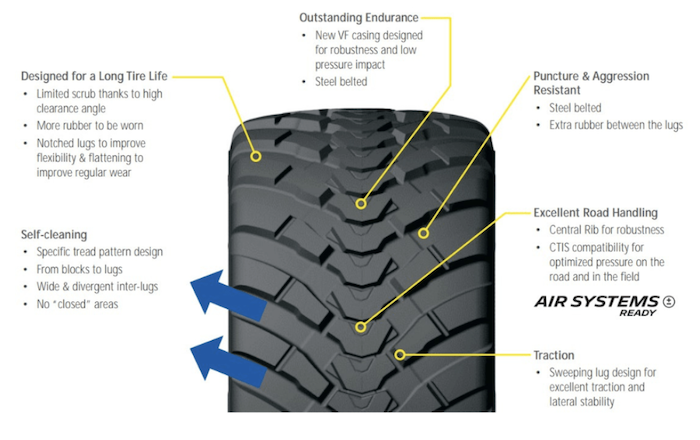
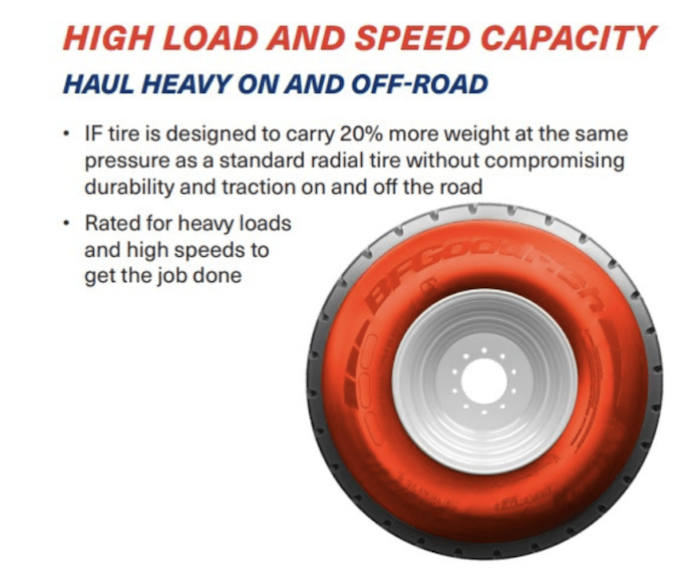
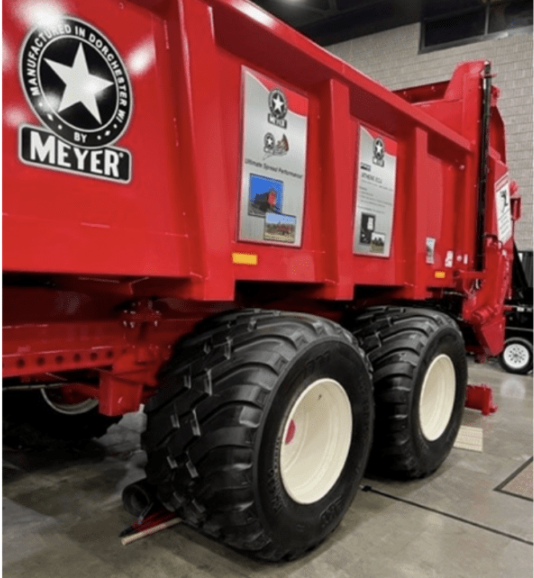
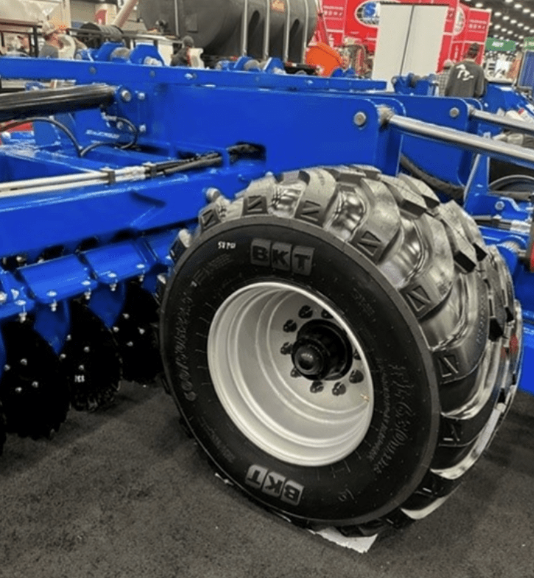
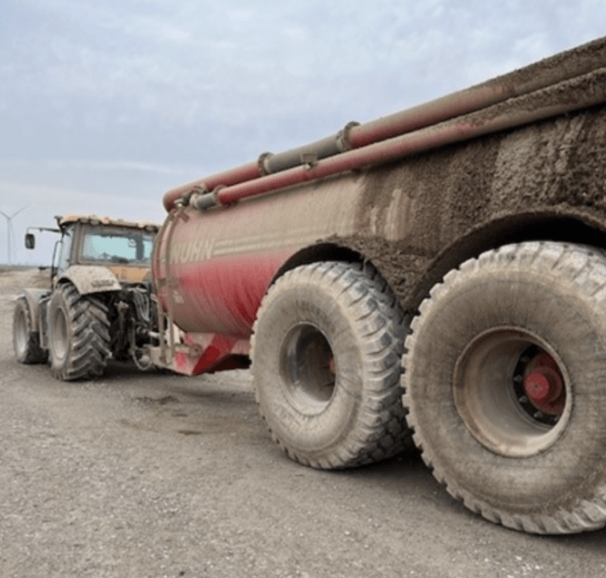




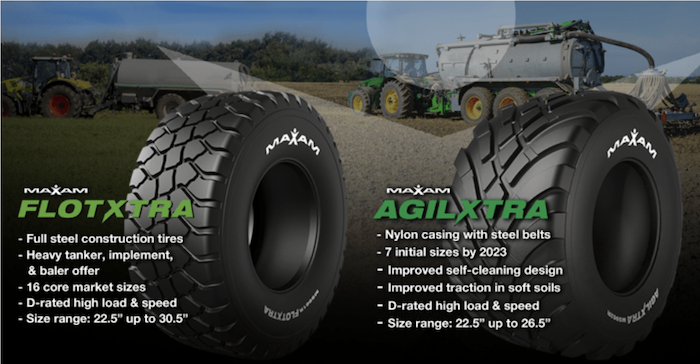

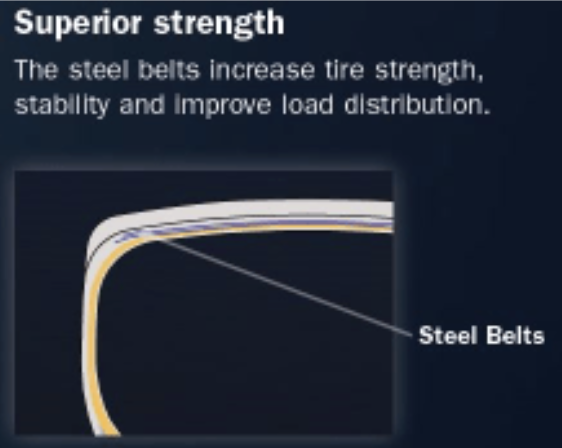
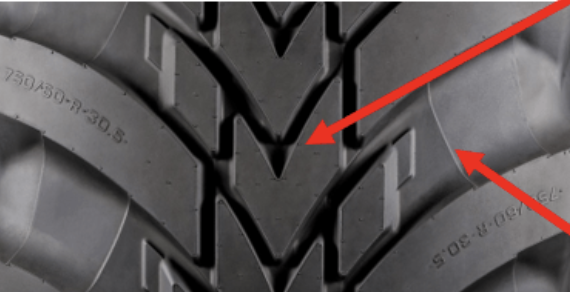






Post a comment
Report Abusive Comment